Welcome back to my Magic for Artists series. If you missed Part 1, go back and read it now, because it’ll give you some background on why I’m doing this series and what some definitions of magic are, and why it’s good for fantasy artists especially to understand how you can use magic as an artistic tool and as a topic for making art. As I said in that last post, we’re not tackling magic in the religious sense, but more in the psychological sense. In a nutshell, I believe artists access the subconscious to make their art, and magic in all its forms are tools to help get your conscious brain and your subconscious brain talking. And one of the best ways for artists — because its so damn visual — is cartomancy, aka, card magic. Decks like tarot, lenormand, and oracle decks are literally the illustration of your subconscious.
No wonder artists love illustrating card decks! My purpose in writing this article is to educate artists before they decide to tackle a Tarot deck. There are too many Tarot Decks out there where the art might be nice, but the artist didn’t know the meanings of the cards, so they’re not as good (and not as popular with the Divination audience) as they could be. And that’s a shame, because there’s so much demand for good decks of all types out there! And there’s a lot of artists who would be much better suited to doing an Oracle Deck, a Lenormand Deck, or another style of deck that would better fit their art (and vary the amount of cards they need to illustrate).
I’m not going to be giving a lot of history in this post, because it will balloon infinitely out of control. So here’s a great article on playing card history from The Atlantic, a more in-depth page from World of Playing Cards, and a nice one specifically on tarot history from Mental Floss.
Now lets break down the types of card decks commonly used for artistic and magical purposes:
Playing Cards
The earliest forms of divination using cards were performed with playing cards, and they are still very popular for that use today. In fact the suits we know in common playing cards (56 cards split into hearts, spades, clubs, and diamonds) correlate to the suits of the tarot (cups, swords, wands, and pentacles) minus the major arcana (more on tarot in a bit). In fact tarot cards were originally elaborate playing cards first, then developed into a deck predominantly for divination. So if you get really well-practiced at remembering the meanings of tarot cards you can easily switch back and forth with playing cards. Many artists choose to illustrate playing card decks and they can then be used for both gaming and divination. My favorite illustrated deck is Wylie Beckert’s Wicked Kingdom deck, which was a huge hit on Kickstarter recently and you can still find on her site. Another fun (and super colorful) deck are the Fredericks & Mae Playing Cards. And if you’re interested in how to use playing cards like tarot cards then my favorite book on how to use playing cards for divination is Fortune Telling Using Playing Cards
.
Tarot Cards
To be called Tarot, a deck must have 78 cards: 22 Major Arcana (the famous ones, like Death, The Lovers, The Tower, etc) and 56 Minor Arcana in 5 suits (yep, just like playing cards). Kings, Queens, Knights, Pages (aka Jacks), and Ace thru 10 numbered cards in Cups, Swords, Pentacles (aka Coins), and Wands (aka Rods).
Tarot cards break into 3 categories: Marseilles Decks, Rider-Waite Decks, and Original Decks. Marseilles Decks are closest to what we’d consider the “original” tarot decks. They tend to look reminiscent of renaissance Italy or France, and were popular in those aristocracies. They started as gaming cards first, in a kind of a story-generating game. Over time they also became wildly popular as divination cards (not a far stretch from their use as a story generator). Alejandro Jodorowsky, the famous director, is devoted to the Marseilles Tarot as a spiritual and artistic tool and has designed his own Tarot de Marseille and written his own tarot book
. The tarot also shows up frequently in his films, especially The Holy Mountain. The main difference between Marseilles Decks and Rider-Waite Decks are that Marseille Decks only have full-scene Major Arcana and more playing-card style Minor Arcana, while Rider-Waite Decks have fully illustrated Majors and Minors.
Rider-Waite Decks are probably the ones you first think of when you think “tarot”. The cards and accompanying booklet were written by Arthur Edward Waite, and published by Rider publishing house in 1909. Sometimes these decks are called Smith-Waite Decks in order to credit the artist, Pamela Coleman Smith. (A Pratt graduate, actually.) Both Waite and Smith were members of the Hermetic Order of the Golden Dawn, and we’ll talk about them in a future post when we tackle some Chaos Magic.
Here’s Smith with the original set of cards (they were muted originally and some modern reprinting have gone back to her original palette:
Here’s some cards from a standard brightly-colored reprinting, which has become by far the most common Tarot Deck in the world:
What made the Rider-Waite Deck so popular was that every card in the deck has a full scene illustration. Beyond that, Waite and Smith packed so much symbolism into the cards that it takes years to uncover it all. Which colors are being used for which character, the calmness vs. roughness of the sea, the way the Minor Arcana suits appear in the Major Arcana cards all lead you in how to intuitively interpret the meanings. Smith was a master of symbolist art and she illustrated layer upon layer of meanings into these cards. In fact, the 22 Major Arcana cards play out in the Rider-Waite as the story of a person’s journey to wisdom, from The Fool card to The World card.
Most Tarot decks you will find that are not specifically Rider-Waite are still Rider-Waite clones. Many artists just take Smith’s illustrations and redo them in their own style, with their own spin. One of my favorites (and the deck I use for daily practice) is the Aquarian Tarot by David Palladini (first published in 1970, but still very popular today). Although the style is different, each card is pretty much a straight remake of Smith’s cards. Here’s a few side by side:
There’s so many Rider-Waite clones and they’re really fun. There’s a Rider-Waite clone for just about every theme you can think up. I have the Golden Thread Tarot, and I’m patiently awaiting my True Black Tarot. There’s even a Twin Peaks Tarot Deck.
The third type of Tarot Deck doesn’t have a name, but we can call them Original Decks. They take the traditional card names and the card meanings of the Marseilles/Rider-Waite decks and apply their own illustrations of those meanings to them. People like to gravitate towards these decks if they feel the traditional imagery can be a little too intimidating or too arcane. There are thousands of decks in this category. The Vertigo Tarot by Neil Gaiman and Dave McKean and Rachel Pollack is legendary.
I’ve done readings on the Darkana Tarot, which is kind of an urban grunge look.
The deck that is so popular they sell it in Urban Outfitters is the Wild Unknown Deck, which uses animals to illustrate the card meanings. It’s really accessible and a lot of my friends who read Tarot cards for clients use the deck when someone is new to Tarot and they want the cards to be as easy to understand as possible: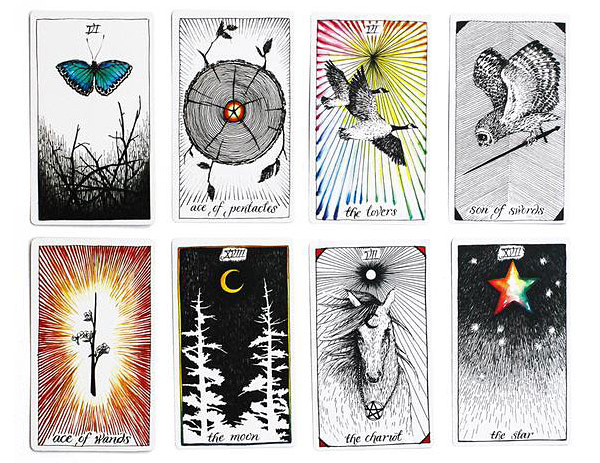
So regardless of what kind of Tarot Deck you have, each card has a specific meaning. And your illustrations will be better (and your deck MUCH more succe$$ful) if you work with the meanings instead of ignoring them. For example, no matter what kind of Tarot deck you have, the Fool card should illustrate naive optimism. The Three of Pentacles should be about collaboration. The Six of Cups should be about childhood nostalgia. Cups (water) are about emotion, Swords (air) about reason and action, Wands (fire) about passion and creativity, and Pentacles (earth) about the physical realm – body and work and money. You can even get into the numerology of the cards – all the 5’s are connected across the suits, and all about struggle. All the 3’s are about creation, etc. There’s so many layers of symbolism in these cards, it’s an artist’s playground to reinterpret.
I promise you, you’ll create a much more meaningful deck (and inspire better illustrations) if you start from the card meaning rather than just copying someone else’s deck.
I’d love to go into it in depth here (seriously, there’s so much there I could write a whole series of blog posts on that), but instead for now I’ll share the best resources where I learned. Do yourself a favor and toss the little booklet you’ve gotten with your deck. It’s usually very unhelpful. My favorite book (ignore the cutesy cover) is Rachel Pollack’s Tarot Wisdom (of Vertigo Tarot fame). I’ve been learning Tarot from both Veronica Varlow (who does online classes) and Moriah Simmons (who does classes in the NYC area — though I am seriously considering getting her to do her Tarot for Creativity class online as a Make Your Art Work Bootcamp). Moriah is great to follow on Instagram for her card of the day lesson. For the quickest overview I’d recommend checking out the Labyrinthos Academy site and (free) app for your phone. Their “Resources” section is fantastic and they do great infographics on both card meanings and how to read spreads:
Their “Tarot Cheat Sheets” are the place to start:
And their spread diagrams are great:
Now you have no excuse! No more making non-functioning Tarot Decks, no matter how pretty they are!
Lenormand Cards
Lenormand Decks are a lot like Tarot Decks…except the titles of the cards & their meanings are totally different. Some people prefer Lenormand. There’s only 36 cards, for starters, and there’s no suits. They’re a little more object based rather than scene based, and you kind of…make sentences…To be fair, it’s not my expertise. Here’s a great rundown of the differences between Tarot and Lenormand. In short, they work the same — using visuals to get gut reactions from your subconscious that your conscious mind can interpret. They have always been purely for fortune-telling and are considered a little simpler, more practical, and clearer (in a good way).
You can easily notice some of the more traditional Lenormand Decks because they have a playing card embedded in each card:
Loteria Cards
Loteria is very very popular in Mexico and Latin America, both as a game (like Bingo or a Memory style game) and as a fortune-telling tool. The original cards came over from Spain, but the most popular version of the game was illustrated by Dom Clemente. The cards are single symbols, and you can draw individual cards per question or use them in spreads like Tarot Cards.
John Picacio has been steadily working on his Loteria Deck, and the cards are gorgeous, already winning a Chesley Award for his “La Sirena” card. He had this to say about the project:
“Loteria is a game of chance and national pastime in Mexico. It’s essentially bingo, but instead of random assortments of letters and numbers, it’s played with pictograms. I’ve seen a ton of folk art takes on these cards, and plenty of culturally-appropriated ones, but rarely an imaginative science fiction/fantasy take. Being 100% Mexican American, I wanted to hold a deck like this in my hands, so i started creating the images I always wanted to see. By about the fourth card (‘El Arpa’), I realized I was making tiny stories in my head while I was drawing. So I started writing those down. I didn’t tell many people about the writing though until fairly recently. Those stories evolved into an umbrella narrative. It’s been an organic process where the art leads the dance, as opposed to me writing something down and creating visuals to complement.
While that continues to unfold, and as I draw the images one by one, I’ve been fashioning this initial series of Loteria Grande cards to build a core audience. In Mexico, curanderas (translated: fortune tellers) use the oldskool Loteria cards to tell fortunes, much like Tarot. So I’ve designed my Loteria Grandes to evoke the Tarot aesthetic, but they have repros of my graphite drawings on the back so they’re limited-run art objects more than playing cards. There will be 54 cards in the deck when it’s all done, and it’s an ongoing project. I started this to create property of my own and that pursuit led to a story I wanted to tell.”
Chepo Peña did a Star Wars Loteria that burned up the internet as a genius piece of fan art.
Hanafuda Cards
Hanafuda Decks are Japanese cards traditionally depicting flowers. There’s 48 cards divided into 12 suits, each relating to a month of the year and specific flower. Although Hanafuda was popular with the aristocracy in the 18th century, they didn’t catch on with the masses until Nintendo started mass producing Hanafuda decks. (Yes, that Nintendo.) You can play different games with them, and though I don’t know of anyone using them specifically as a fortune-telling tool, I have no doubt that someone has. And you could absolutely use them for subconscious prompting, just like you can with any deck.
Kelly McKernan Kickstarted a gorgeous Hanafuda deck and I just got my set! It’s so pretty, I am definitely going to take some time to get to know the cards better:
Kelly had this to say about the project:
“I really wanted to try illustrating a deck in 2016, but Tarot was too big of a commitment, an oracle deck was a little too ambiguous, and Wylie Becket killed it with her Wicked Kingdom playing cards the previous year. My boyfriend turned me onto the Hanafuda deck and after spending some time researching it, it felt like the perfect project to take on: 48 cards from 12 seasonal suits? Make it 12 paintings to be divided into the 4 cards each, recontextualizing the requirements per suit and mashing it with my style was the challenge I was looking for. I began in February 2016, funding the paintings through my Patreon, and completing the project with a Kickstarter in October. The kickstarter was successful and my Hanafuda deck is now a reality!”
Oracle Cards
Last but certainly far from least are the Oracle Decks (sometimes called “Spirit Decks” or “Angel Decks”). These are the decks that give you the most freedom as an artist AND they are enormously popular with the Divination community. You can have a deck of any size, with any kind of imagery. These decks are used purely as subconscious prompts and don’t have any games attached to them. Sometimes they are used before a Tarot reading, when one card is pulled at random and becomes a theme for the reading. Or you can use them in any Tarot Spread. Many Tarot Decks that become popular will soon after spawn an accompanying Oracle Deck, but there are plenty of Oracle Decks that are just Oracles. If you are really itching to make a deck, but the 78 cards of the Tarot is really daunting to you, then you can make an Oracle Deck of any size and theme. I have a very cool Oracle Deck from Birds Ov Prey.
And soon I will have a new one, because Doug Hopes just kickstarted an Oracle Deck from his ShadowMyths series:
I’m sure I’ve missed some types of cards, but those are the big ones.
Uses for Creativity
So all of that explanation is to to help artists who are interested in making their own decks — which can be both a fantastic artistic journey, but also a lucrative one if you make a deck that becomes popular with the divination community. But cards are also a great creative tool for artists to use, not just make. As we discussed in Part 1, artists dig up stuff in their subconscious, as well as the collective unconscious, and they get it across the gap to their conscious mind, where they can make something with it and reveal the truths they’ve dug up. And there are many different ways of bridging that gap, and coaxing those sparks of inspiration to leap across the void. Dreaming, meditating, taking a shower, even exercise can help. However, as visual artists, we respond to visual stimuli most effectively, and tools like cards act like more beautifully illustrated Rorshach inkblots, letting our subconscious free associate. The visuals and symbolic language of the cards let’s our primal visual-minded subconscious talk to our rational language-minded evolved front brain.
To strengthen that shared language, I would recommend what Moriah Simmons stressed in her Tarot for Creativity class: simply pull a card every day and use it as a prompt for either morning writing or warm up sketches. You don’t have to draw or write about the card literally — just let your mind wander and see what comes to mind when you look at the card. As you work with the cards over time you’ll get to know their meanings and have an even deeper well of associations to draw inspiration from. I’ve been doing that almost every day since January and it’s become a treasured start to my mornings. It wakes up my imagination and my creativity for the day. And I’ve gotten to know the Tarot symbolism so much better than I could have any other way.
Moriah had this to add:
“Tarot and creativity are a natural pairing because they both tap into the deeper knowing beyond the logical mind. I developed my Tarot for Creativity class because many of my tarot clients are artists or work in creative problem-solving, and they felt creatively blocked. And that was something I had faced, too. My personal tarot practice helped me access my creative energy. I’d feel blocked, pull a card, and the images would show me a totally perfect but unexpected solution that my logical mind hadn’t worked out. So I wanted to share the practice I developed because it really is effective and accessible without extensive tarot study. We all have an intuitive sense of what images and symbols in tarot mean, because we’ve lived our whole lives in the same Euro-centric culture that birthed tarot. Everyone knows more than they think they do, and is more creative than they think they are, and I love how tarot helps us recognize that.”
More Cards from Great Artists!
I tried to fit in as many decks as I could, but there are so many artists I know that have made (or are currently working on) decks that I wanted to list a bunch more for you to check out:
Sam Guay just launched her Blood Moon Tarot Kickstarter and it funded in less than a day
Stephanie Law’s Shadowscape Tarot is one of the most popular modern decks and she had this to say about creating the deck:
“Creating tarot art for me was about taking each card’s meaning and exploring that concept of that tiny slice of my larger experience, trying to find how it connected with me and what it meant to me on a personal level, not just as an abstract concept. Because the concepts in the tarot have this overarching correlation as a metaphor for one’s life journey (The Hero’s Journey, which itself has roots in the study of mythology), echos of it are in your everyday actions and struggles and triumphs. In designing my art, I went through a method of personalizing each of these little slivers of experience, then taking my personal instances and reinterpreting that into my own language of visual imagery and symbols.”
Kiri Østergaard Leonard illustrated the Green Witch Tarot and had this to say about it:
“I had the pleasure of illustrating The Green Witch Tarot by Ann Moura for Llewellyn Worldwide (I believe is the largest US publisher of tarot and oracle decks). When working with Llewellyn the symbolism and imagery is per-determined by the author. I believe that often times the authors have a standing reputation within tarot/pagan/wicca/witchcraft community – at least that was the case with Ann Moura, who is famed for her Green Witchcraft books.
As illustrator I received an art order which described each card in detail, including all symbolism. While I didn’t have an input on symbolism and elements in the art, the publisher was very clear that they wanted it 100% in my art style and showed me samples from my portfolio that they really liked. I also got to set my own deadline, and keep all my rights except for the use of the art as a tarot deck. It was a really great experience to work with them! What really blew me away about the experience was meeting the fan-base, tarot has an absolutely massive fan-base of very dedicated people.
The Green Witch Tarot uses mostly the classical tarot symbolism but with a heavier focus on the positive aspects and also Ann Moura made some name changes to some of the major arcane cards, so that the deck would match her books. The deck also come with a companion book on how to read each card and with specific tarot spreads that work with it, that being said despite some cards being renamed I found the symbolism stayed true enough to the Rider Waite that you can read it without, though you absolutely get more out of it if you study the companion book. In addition to the classic tarot symbolism each card has an animal companion and a herb/plant that’s key to the symbolism of the card.”
And there’s a process video too.
Kevin J Stanton painted a beautiful and unique Botanica Tarot completely of plants and he had this to say about the project:
“Botanica marks the third time I’ve attempted making a deck. The first two attempts tried to fuse Rider Waite symbolism with floral imagery, and I never made it past the third card. Finally, I decided to let myself do what I realized I always wanted to do – a deck of just flowers. This involved my favorite parts of making art – heavy research into symbolism, looking up tons of photo reference, and drawing beautiful plants. They’re decorative cards, stripped of any easily identified symbols, but the booklet I’m working on goes deeper into why each flower was chosen for a purpose. Death is Pinus contorta, because it’s a card about endings and beginnings, and that’s a pine that only spreads its seeds in a wildfire. The Empress is Mother Nature in Botanica, and represented by magnolia because it’s one of the oldest living flowers, and so many plants are descended from it. That’s what I’m so drawn to with Botanica – letting people experience a piece of my world, full to the brim with flowers. “
Jabari Weathers just had a gallery show of the originals of forthcoming decks (I bought the Two of Cups piece) and had this to say:
“For both the decks I worked on, I wanted to make illustrations that asserted each deck as tools of introspection first, rather than extra decoration for existing products. Despite being made to enrich existing print games, it was understood by John Wick Presents (7th Sea) and Magpie Games (Bluebeard’s Bride) that each deck needed practical uses for readers who would encounter them, even with pretty major liberties taken to the form. Whether it was through a more linear reflection of a voyage through the Sortè, or the labyrinth of dark symbols that urge its querent to confront the most esoteric parts of themselves through the Tarot of Servants, I hope that the two pay proper homage to Rider-Waite’s format and depth. No matter how far the former diverged, or the latter asked it’s own dark questions, that was my blueprint. Of course, The latter deck has some of Thoth’s confrontational energy….”
You can find the decks here and here.
Tawny Fritz has been working on a Tarot deck and posting the process shots on her social media. Meanwhile she talked with me about the project:
“I have always been interested in tarot art and had begun looking into developing a deck of my own when a client found me via a friend (networking! woo!). She and I discussed my art style and how it can suit a deck of tarot cards and discovered that we had much the same vision for the type of imagery we wanted to see in a deck. My client runs a business wherein she promotes healing and empowerment of women/feminism, and the deck is meant to become a part of that overall vision. We have based nearly everything so far on the Rider-Waite deck, however, we also delve into the meaning of each card in an attempt to update the symbolism or generate new imagery that better suits our vision for the deck. For example, instead of a male priest for the Hierophant (currently a work in progress), we are going with a fierce but staunchly rigid appearing woman wearing ceremonial garb. Our Fool is a cocky, androgynous, almost gender fluid fella who definitely does not take life too seriously. So far, my favorites are the Aces… four powerful goddesses with a lot of hair and a lot of power. Some of my favorite ways to incorporate known symbols like water and flowers has been through tattoos! Tarot and Oracle decks seem to provide an opportunity for artists to unabashedly express themselves however their style dictates while still creating a widely recognized product. Oh, and I’ve learned recently that there is a rather large collector community for tarot decks!”
Abigail Larson is currently working on the Dark Wood Tarot
Yoshi Yoshitani has a gorgeous Fairytale Tarot in the works
I’m also very excited for Lisa Sterle’s Modern Witch Tarot:
I know I’m leaving a ton of artists and decks out, so if you want to post your deck, or a favorite, please do so in the comments!
And for the love of all things SFF, will someone illustrate a decent Dune Tarot please?!
SaveSave


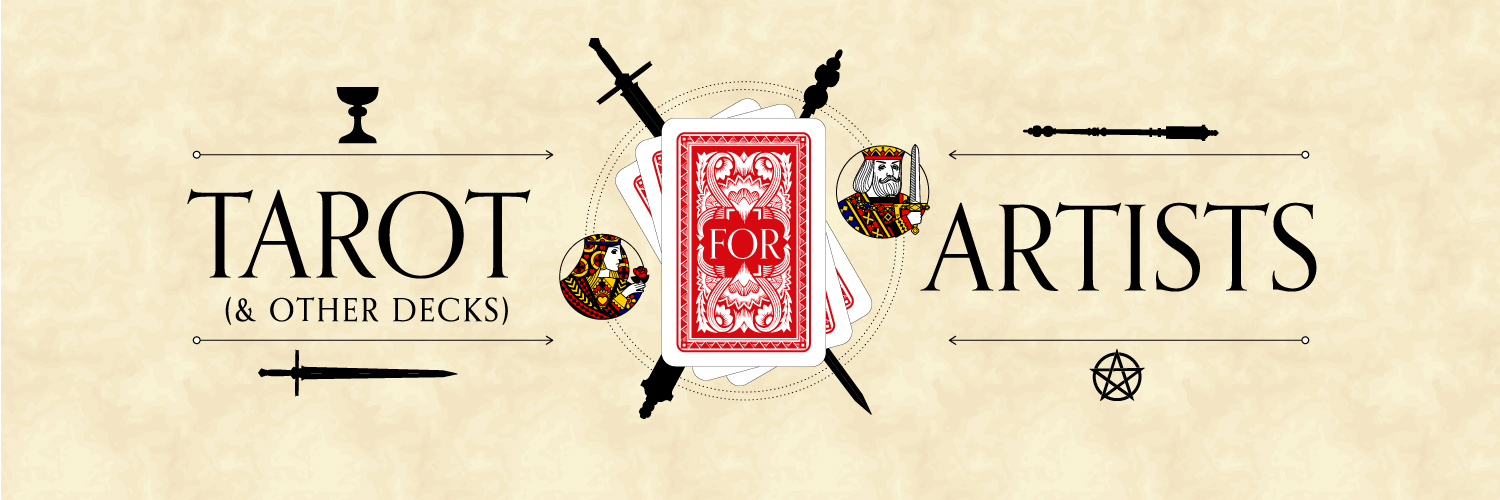


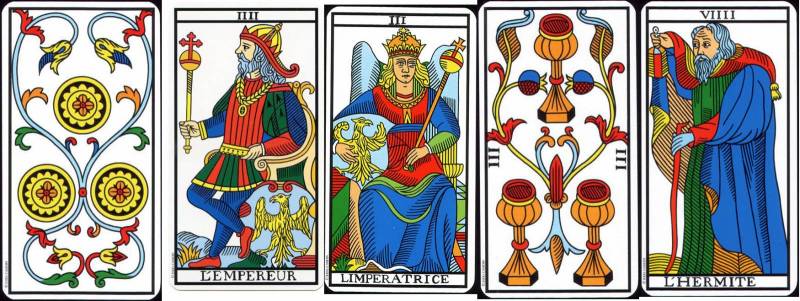
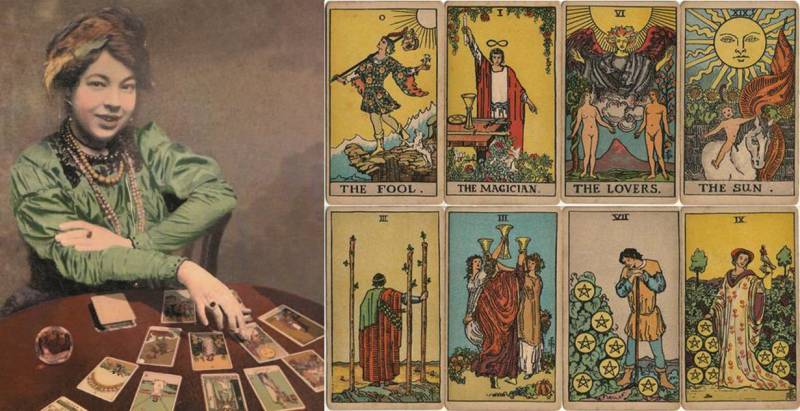
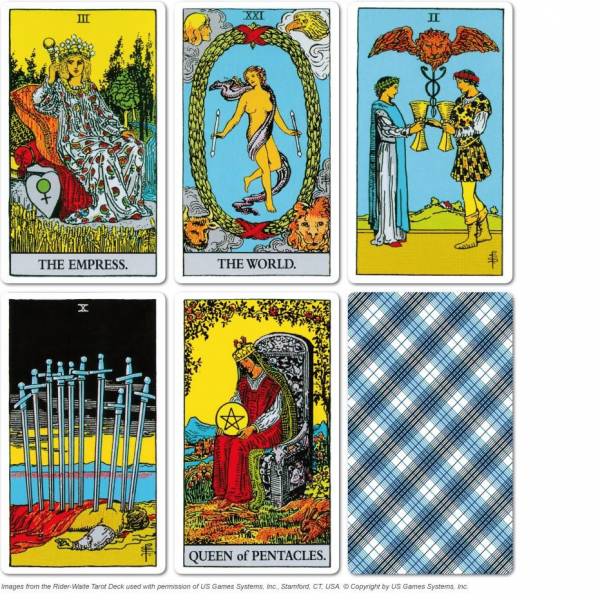

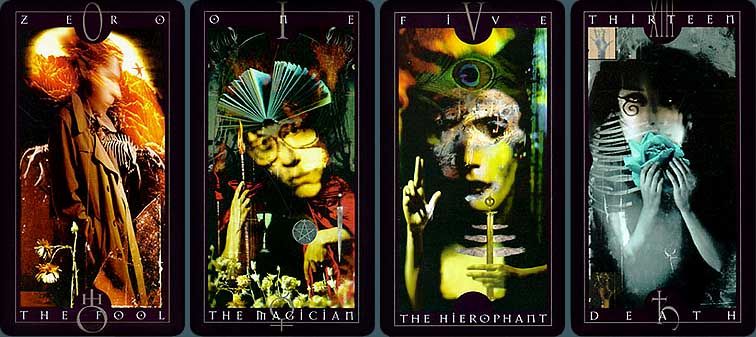

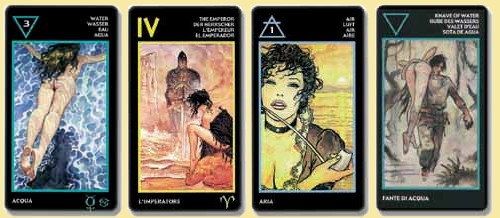
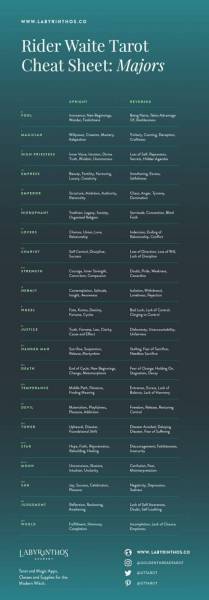
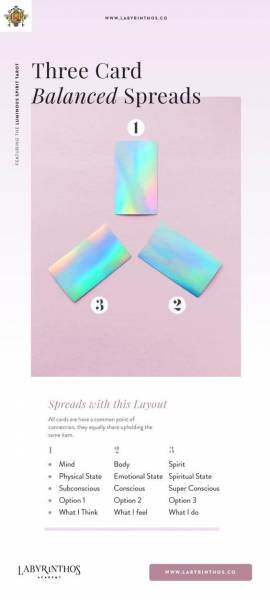

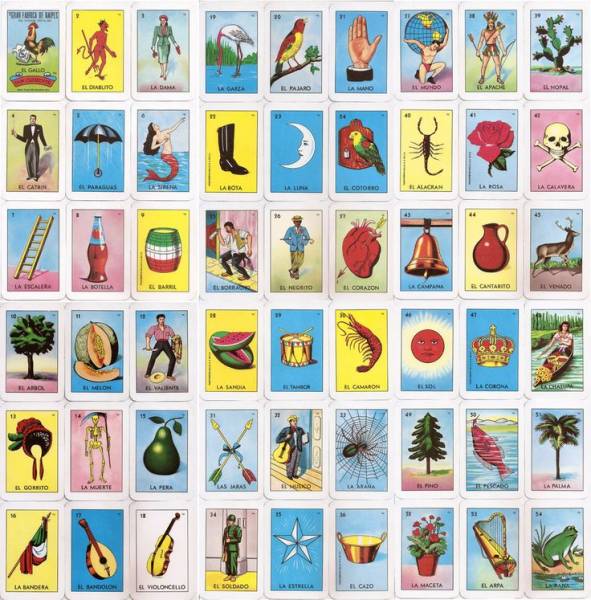

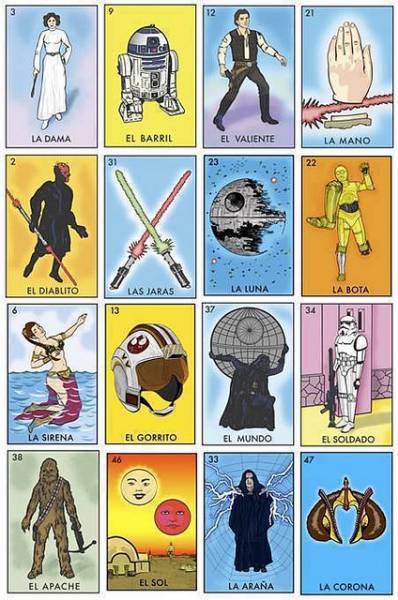

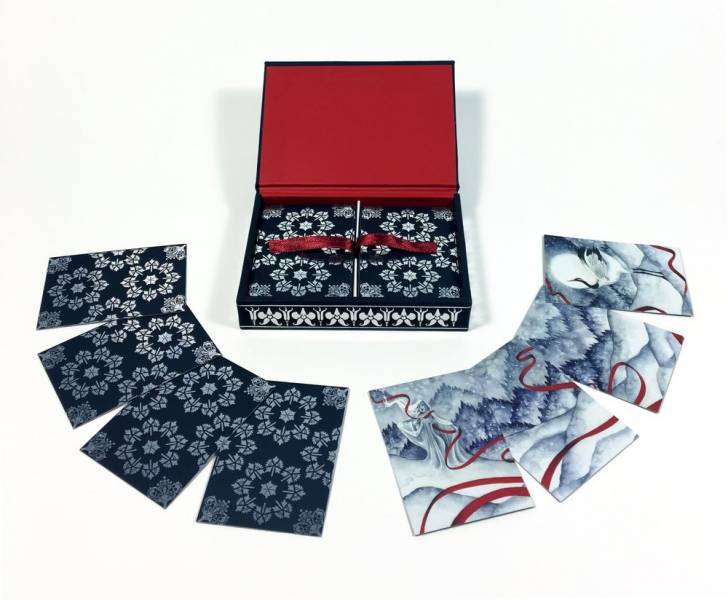
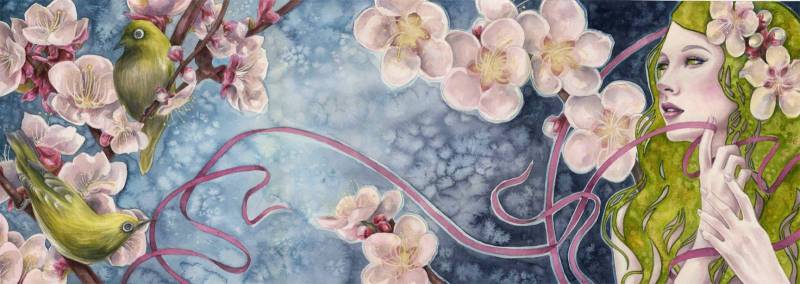
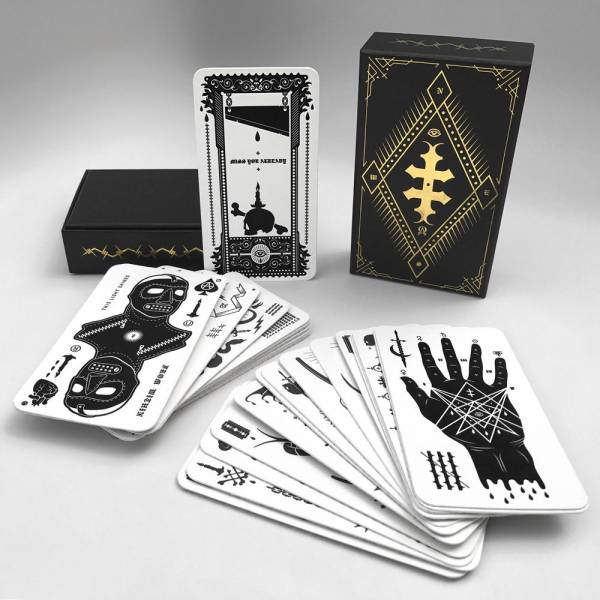
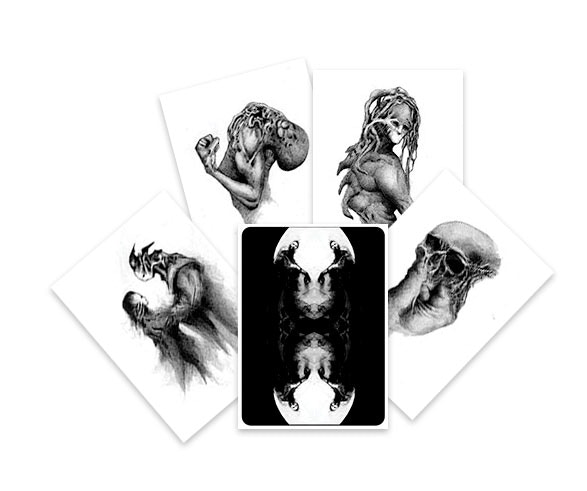
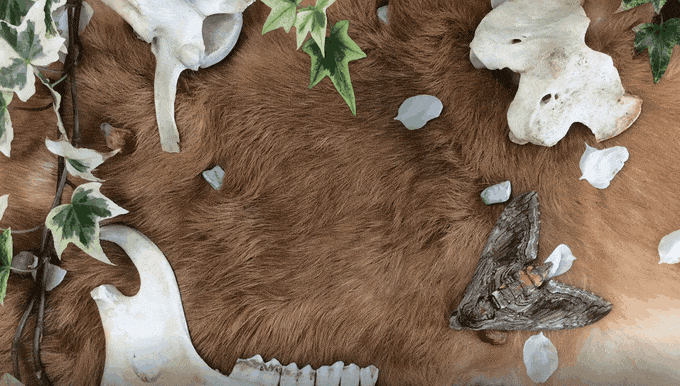
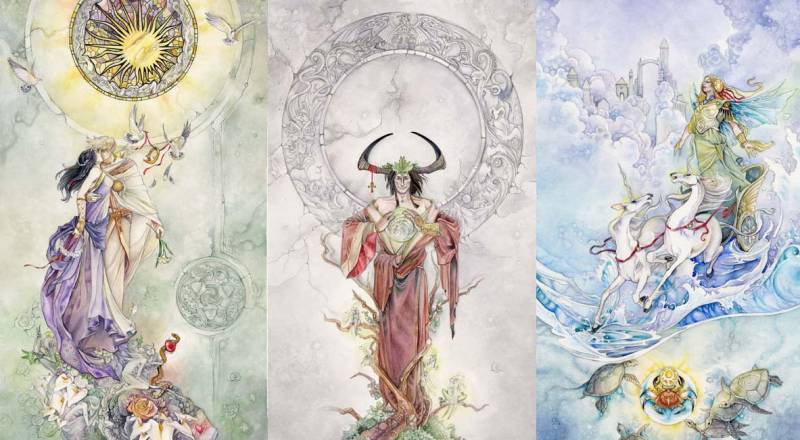
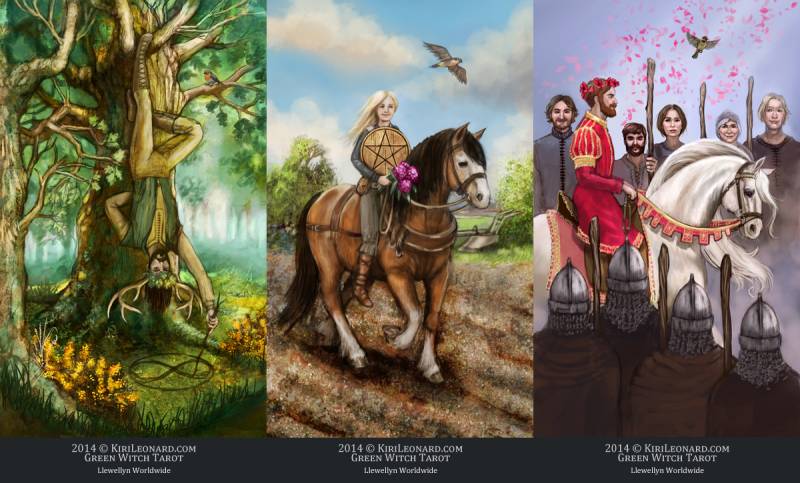
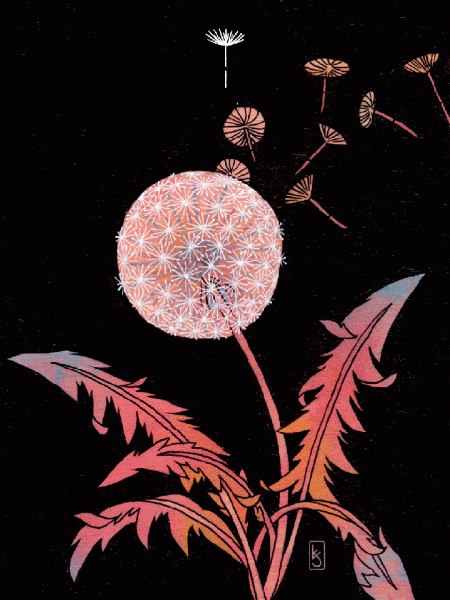
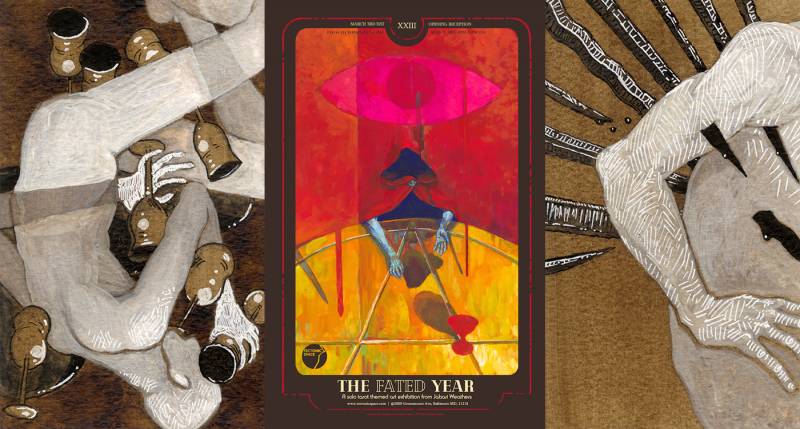


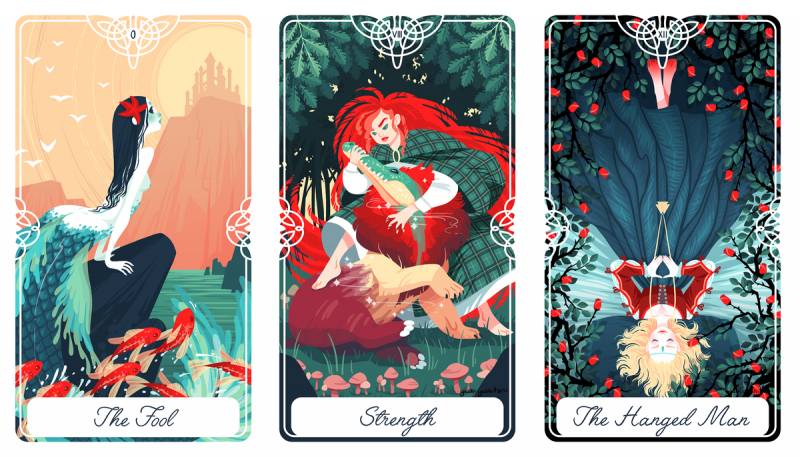

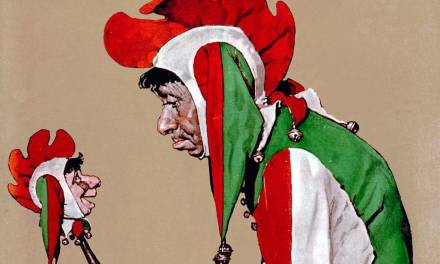
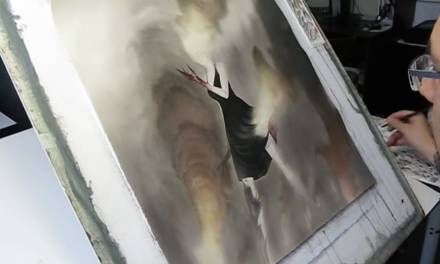
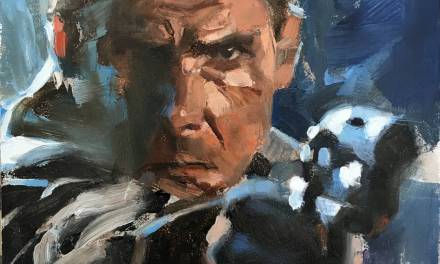
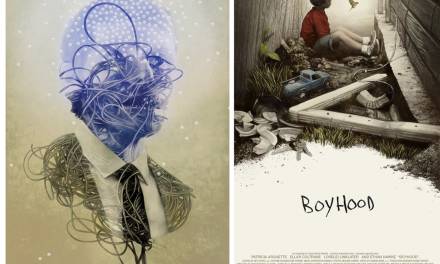
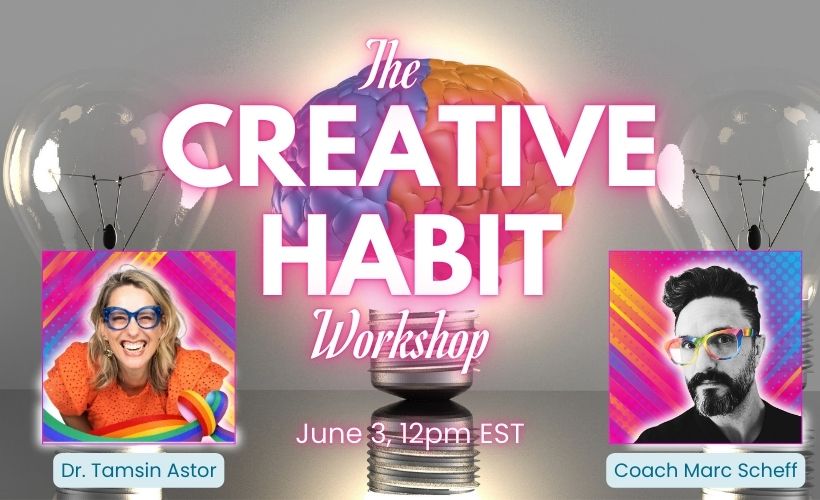
Thank you for all this information Lauren!
Great stuff, thanks!
This is so awesome! Thank you for these posts, they definitely help me get more comfortable with tarot and other magic related cards (as someone who grew up as a Christian it was difficult to get my head around it and my heart into it). In the past year I decided to look into working in this field and finally I got my first Oracle deck commission and with Blue Angel Publishing!! I’m not so quietly freaking out haha. And to top it off I got selected to participate in 78 Tarot’s Elemental deck (your wish for someone to create an elements focused deck is granted!). It’s pretty exciting 🙂 If you ever do another post about this subject I’d love to hear about best working practices when it comes to doing a card set for example, which publishes accept submissions, the different types of contracts and ways of paying an artist, copyrights… and something I’m currently wondering about – how do you balance working on a deck with the rest of your life??! I still have to work a part time job and am worried that the time I have available won’t be enough (15 months) – though I know of some artists who completed a whole tarot deck in a year, I would love to know how they did it.
Thanks again for a great post Lauren!
Oh I can’t wait to see the deck! As I see it, the tarot (and a lot of “magic” is not in conflict with any religion. As any tool, it depends how you use it.
Hello Lauren. Since you are a fan of Rachel Pollack you may enjoy the Lenormand Deck she made with Robert M. Place called The Burning Serpent Oracle. This deck has a 260 page companion book written by R. Pollack called The Burning Serpent Oracle, A Lenormand of the Soul. Robert M.Place has several decks, my favourite is The Alchemical Tarot, and several excellent books the most recent is The Tarot, Magic, Alchemy, Hermeticism and Neoplatonism. He lectures at the NY Open Center and Metropolitan Museum of Art.
Awesome thank you! I’ll check those out! I’ve been meaning to track down more of Rachel Pollack’s work too…
This is so in-depth. Thank you for introducing me to a few artists I need to track down. 😀 I am the editor/publisher of The Cartomancer (a quarterly print & digital magazine.) I would love for you to contact me about possibly writing an article. 😀 I’m also the author of several decks including the Fairy Tale Lenormand with Lisa Hunt (truly a star in the Tarot world as well as oracles and Lenormand.) She has a new deck that she’s working on. Can’t wait! I appreciate all that you have shared here. So much to look at! 😀 I would also love to send you a complimentary copy of The Cartomancer (summer) edition. It’s at the printer now. Just contact me so I can get you a print copy.
Oh sure! Thanks Arwen, emailing you now!
Edit: Facebook friended you.
You left out a major strain of decks: the Harris/Crowley Thoth. It’s closely related to the RWS but is definitely its own thing; a modern deck based on the Thoth has a pretty different feel from ones based on the RWS.
It was one of my primary sources when I made The Silicon Dawn Tarot a few years ago. Which I really need to get around to kickstarting a second edition of.
It’s true, the Thoth vein of decks is a major one, but Crowley is definitely not for beginners, which is where I was aiming for this post. One of these days I’ll get to do a Tarot 201 post! And nice to meet you! I got a reading on the Silicon Dawn deck a few months back and it was awesome! IF YOU KICKSTART ANOTHER PRINTING LET ME KNOW.
Wow, thank you so much for this post! I have been trying to learn about other Tarot-like divination decks (and also making my own “oracle cards”) so this helped a lot!
Fantastic Resource Hub for Cartomancy & Art!
Wow, Lauren, this is an incredibly thorough and insightful piece! Connecting cartomancy – Tarot, Lenormand, Oracle, etc. – to the artistic process as a way to access the subconscious is brilliant. Your breakdown of the different deck types is super helpful, especially for artists considering creating their own. The emphasis on understanding card meanings (beyond just copying Rider-Waite) is so important for creating a meaningful and successful deck.
You mentioned Labyrinthos as a great resource for learning meanings and spreads – their site and app are indeed excellent starting points. For those who might also appreciate a straightforward, free online platform to simply do readings and explore cards without needing a physical deck immediately, freetarot.org (https://freetarot.org/) is another useful site. It offers free readings, supports multiple languages, and is designed to be accessible globally.
Just sharing it as another resource in the digital tarot space alongside the great ones you listed. Thanks for such a comprehensive and inspiring article connecting magic and art!